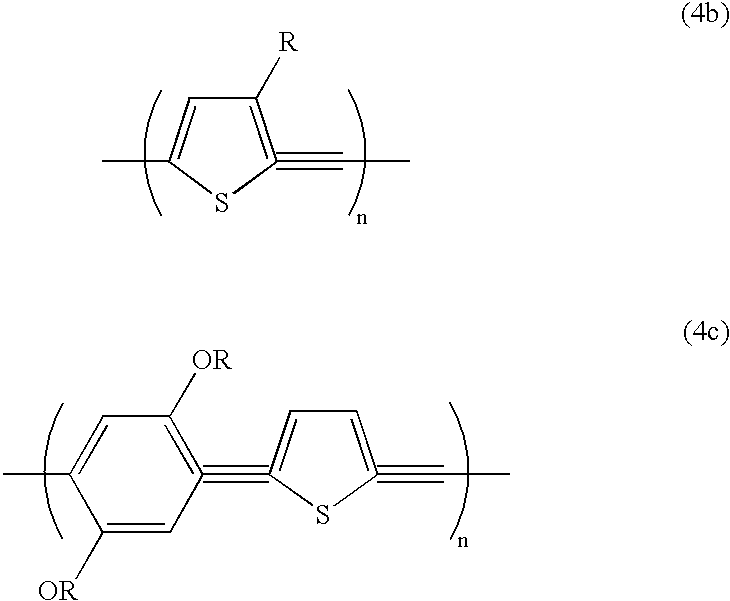Method of manufacturing a semiconductor device using a polymer film pattern
a technology of polymer film and semiconductor, applied in the direction of semiconductor devices, electrical devices, photosensitive material processing, etc., can solve the problems of shrinkage of the volume of water, weakening of the mechanical strength of the silicon substrate, and crystal defects in the silicon substrate, so as to improve the pn junction characteristics and improve the element characteristics markedly
- Summary
- Abstract
- Description
- Claims
- Application Information
AI Technical Summary
Benefits of technology
Problems solved by technology
Method used
Image
Examples
example i
FIG. 7 shows a cross sectional view of a schematic drawing of the construction of a CMOS-FET 10 in performing an ion implantation in a method according to an embodiment of the present invention.
CMOS-FET 10 may be prepared as follows. First, an n-type well 12, a p-type well 13, and an element isolating insulating film 14 are formed on a semiconductor substrate 11. Second, after formation of a gate insulating film 15 on semiconductor substrate 11, a gate electrode or a dummy gate 16 is formed, followed by implanting ions of B or BF.sub.2 into semiconductor substrate 11 in a concentration of approximately 1.times.10.sup.14 to 5.times.10.sup.15 cm.sup.-2 so as to form a p-type impurity layer 17.
A mask 18 for implanting ions of an n-type impurity 19 may be prepared by using a polymer having a carbon content higher than a hydrogen content. The polymer used in accordance with the present invention may include, for example, a polymer containing about 60% of carbon by atomic ratio, about 1 t...
example ii-1
Manufacturing Method of a Damascene Gate MOSFET Using a Polymer as a Damascene Gate
In the manufacturing process of a transistor, it is important to carry out heat treatment in order to activate implanted ions. Therefore, the following experiment was conducted in order to confirm whether or not the polymer is capable of withstanding the heat treatment.
FIG. 8 is a graph showing experimental data with respect to the heat resistance of a polymer film. Specifically, the experiment was conducted by applying heat to a polymer film, while changing the atomic ratio of carbon to hydrogen of the polymer film. The heat was applied for one hour to simulate a heat treatment during a manufacturing process, and the heat resistance of the polymer film was evaluated in terms of the "applicable temperature" which does not bring about deformation of the film by thermal decomposition (degassing), peeling of the film, or cracking. In addition to carbon and hydrogen, oxygen is also present in the polymer ...
example ii-2
FIGS. 12 to 14 collectively show a method of manufacturing a transistor according to another embodiment of the present invention. Like reference numerals are used to denote elements similar to those in Example II-1 previously described. Example II-2 differs from Example II-1 in that Example II-2 comprises the step of increasing the thickness of the oxide film in extension region 35 of the source-drain region on the surface of semiconductor substrate 31, after the formation of dummy gate 34.
First, structure 30" shown in FIG. 12 is prepared. Specifically, a groove is formed by dry etching on the surface of silicon semiconductor substrate 31, followed by forming insulating film 32 within the groove by means of deposition or coating for element isolation. Similarly, a silicon oxide film can be used as insulating film 32. Alternatively, a silicon nitroxide ("SiNO") film with a thermal expansion coefficient close to that of silicon, i.e., about 3 ppm / K can also be used. The surface of ins...
PUM
 Login to View More
Login to View More Abstract
Description
Claims
Application Information
 Login to View More
Login to View More - R&D
- Intellectual Property
- Life Sciences
- Materials
- Tech Scout
- Unparalleled Data Quality
- Higher Quality Content
- 60% Fewer Hallucinations
Browse by: Latest US Patents, China's latest patents, Technical Efficacy Thesaurus, Application Domain, Technology Topic, Popular Technical Reports.
© 2025 PatSnap. All rights reserved.Legal|Privacy policy|Modern Slavery Act Transparency Statement|Sitemap|About US| Contact US: help@patsnap.com



